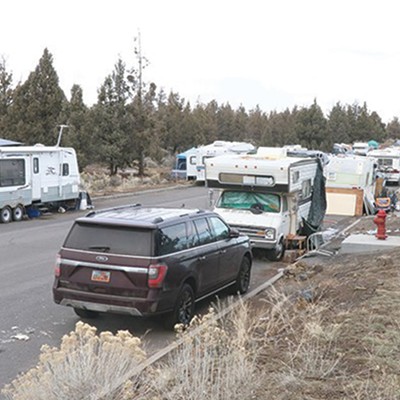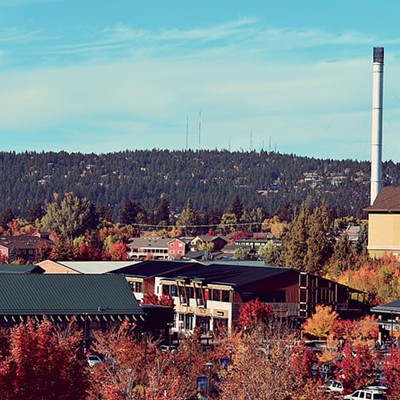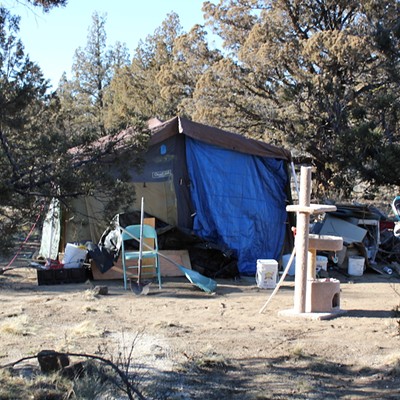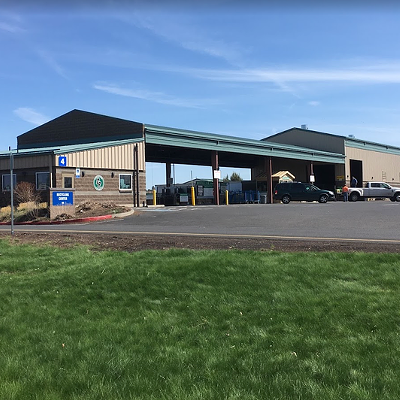Bend's sewer system is at capacity, but that's not its only problem. Add several decades of neglected maintenance and pump stations reaching the end of their lifecycle to the mix and it's a rather stinky—and expensive—situation. Coming in at $10.6 million, it's also one of the costliest infrastructure projects currently on the City's plate.
As with so many of the City's infrastructure challenges, Bend's population growth is one of the major reasons for the strain on the current system.
"For the Colorado lift station, it replaces an existing lift station that is at capacity and is at the end of its life cycle. So it not only addresses that issue but it addresses future capacity issues," says George Franklet, the project's lead engineer. "So it really kills two birds with one stone."
Sewer pump stations send sewage to treatment facilities and typically last between 20 and 30 years. Franklet hopes that the new lift station will have an even longer life and says it was desgined to allow its mechanical equipment to be switched out and upgraded when necessary.
The project is addressing the anticipated Urban Growth Boundary expansion and the resulting increase in infrastructure needs. But those long-term benefits come with some short-term costs. During the installation of the new pipes, one lane of Arizona Avenue was closed. As the upgrades progress, more detours and congestion are predicted until the project's completion in April.
"There's a lot of discomfort with the construction that just comes with—it's part of the price of growth," Franklet explains, "and we'll get through it and we'll look back on this time and benefit from the fact that it accommodates the future growth that's going to happen in Bend."
If the sewer system problem sounds familiar, that's because it is. Comparing it to the current street conditions in Bend is not a stretch.
"It kind of is at the level of the road problem, we just don't see it," says City Councilor Nathan Boddie. "The other problem is that it's outdated and it relies on all of these little pump stations which are inefficient, break down, use electricity, and all of these problems happened because we didn't invest any money in it for the last 50 years."
According to Boddie, the old way of funding the sewer system came from federal earmarks, and so the City didn't reinvest any money into the system. However, this isn't an issue unique to Bend.
"It's not like we're the ones that invented that irresponsibility. There are cities and towns all over the country in the same situation because the way these things were paid for changed," says Boddie.
Now, the ratepayers will mostly have to pick up the costs for system replacements and upgrades.
"Some funds are coming from the State and other routes, but the majority is going to be from ratepayers," says Boddie, adding that rates will be raised gradually. "We're doing it in a pretty sophisticated way financially so that it's not all the people here now paying for growth for the future. It's spread out over time so that current rate payers aren't sort of taking the whole bill, but it's still painful."
Another potential headache for the City is the possibility of overflows. Public Works Director Paul Rheault says Bend averages around two or three overflows per year, but the causes aren't related to capacity. One reason is "foreign debris inside the sewer line and tree roots that find small holes in the pipe and grow over time," says Rheault. "In the past, grease used to be a big problem."
Rheault says there are environmental checks in place in the event of an overflow.
"We do have an overflow Oregon Emergency Response System, and then in 24 hours we have to notify the Department of Environmental Quality and then follow up with a written report," he says.
A number of communities in Bend are not connected to the City's sewer system, but Boddie says that will change eventually.
"If you have any kind of housing density, you run into water quality issues—these are aging septic systems so they're starting to break down," he says. "They need to be replaced; however, the State isn't allowing them to be replaced anymore because they're not good—we don't want them in a town so we are trying to get people hooked up to the sewer in the areas of Bend that do have some septic systems."
And while the sewer capacity isn't visible yet, paying attention to it now may help alleviate future infrastructure concerns in Bend.
"From a City perspective, we want more density, we want to be able to build more homes, we want to be able to grow intelligently as a city, and we can't do that if the limiting factor is there's no more sewer capacity in this area or that area over there," says Boddie. "And from a public health and environmental perspective, you want this to be sanitary and safe, so it's not getting into the ground, it's not getting into drinking water, and it's not getting into the rivers."

























